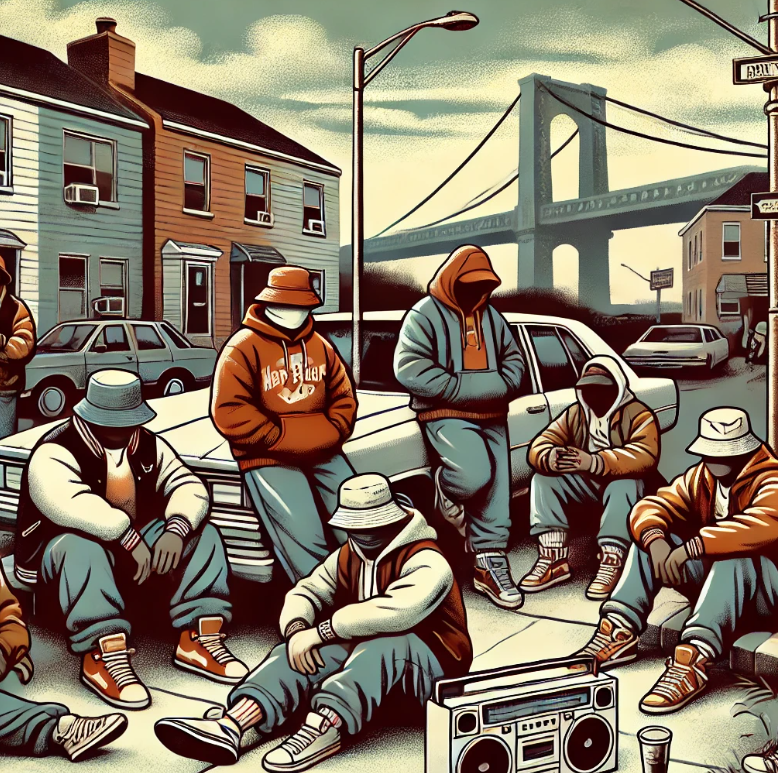
New Jersey Hip Hop is a study in contrasts. On one hand, the state has given rise to some of the most iconic voices in the genre, yet it’s often overlooked in larger conversations about regional rap scenes. For decades, the Garden State has been a bridge between New York City’s raw energy and Philadelphia’s rhythmic experimentation. This unique geography shapes its Hip Hop sound—a dynamic blend of gritty lyricism, smooth production, and unorthodox creativity that refuses to be boxed in.
From the block-party anthems of Naughty By Nature to the surreal, multilingual rhymes of Mach-Hommy, New Jersey Hip Hop albums are steeped in personality. They move between different emotional tones with ease, from celebratory to reflective, grimy to poetic. The beats often carry an edge: dusty drum loops, razor-sharp samples, and basslines that punch through speakers. Yet there’s an inventiveness, too, with producers reworking funk grooves, Caribbean rhythms, and even avant-garde jazz into their tracks. These aren’t records that follow trends—they create their own lanes.
The emcees are storytellers at heart, each bringing their own voice to the mic. Redman’s offbeat humor and relentless delivery feel like an adrenaline rush, while Lauryn Hill’s introspective poise on her neo-soul classic The Miseducation of Lauryn Hill cuts deep with emotional clarity. Artists like Rah Digga channel the razor-sharp lyricism that feels rooted in the cypher battles of Newark, while outsiders like El Da Sensei and Tame One (of Artifacts) craft bars that are as intellectual as they are street-smart.
New Jersey’s Hip Hop identity thrives in its diversity. It’s not tied to a singular style or era. It can be rugged and underground, like the lo-fi mystique of Mach-Hommy, or mainstream and magnetic, like Queen Latifah’s reign as one of rap’s first royalty. In every corner of the state, from Paterson to Camden, artists continue to turn local experiences into timeless music.
This list of 25 albums is a journey through the sound and soul of New Jersey Hip Hop. It highlights the state’s quiet but undeniable contributions to the culture—records that are as vibrant and varied as the state itself.
Queen Latifah - All Hail The Queen (1989)
Queen Latifah’s All Hail The Queen, released in 1989, arrives as a declaration of presence and intent within Hip Hop. While anticipation built from her early singles like “Wrath of My Madness,” the album presents a fuller picture of her artistic vision. The sound is rooted in late-80s Hip Hop, with production primarily handled by DJ Mark the 45 King, incorporating elements of soul, funk, and touches of other genres like reggae and house. This mix creates a varied listening experience, though not always with consistent impact.
Latifah’s vocal delivery is a central feature. Her voice is clear, commanding, and carries a sense of authority. On tracks like “Evil That Men Do,” a collaboration with KRS-One, this strength is particularly effective, as she tackles social issues with directness. The production here provides a fitting backdrop, with a hard-hitting beat that underscores the seriousness of the subject matter.
The album explores different moods and styles. “Come Into My House” ventures into hip-house, a popular trend at the time. While this track might feel somewhat separate from the rest of the album’s sound, it displays Latifah’s willingness to experiment. Other tracks, like “The Pros” featuring Daddy-O of Stetsasonic, blend rap with reggae influences, creating a more relaxed but still rhythmic feel.
“Ladies First,” perhaps the album’s most well-known track, stands out with its message of female empowerment. Featuring Monie Love, the song’s impact is amplified by its clear and direct lyrics, addressing the need for respect and recognition of women in Hip Hop. The production here is effective, creating a backdrop that allows the message to come through clearly.
While All Hail The Queen has high points, some tracks are less memorable. While conceptually interesting, the collaborations don’t always achieve their full potential. “Mama Gave Birth to the Soul Children,” featuring De La Soul, feels somewhat generic compared to the distinctive styles of both artists. This inconsistency affects the album’s overall cohesiveness.
Despite these variations, All Hail The Queen establishes Queen Latifah as a significant voice in Hip Hop. Her vocal presence and the album’s exploration of different styles and themes make it a notable debut. It sets the stage for her subsequent work and highlights her artistic ambition.
Chill Rob G - Ride the Rhythm (1989)
Chill Rob G’s Ride the Rhythm, released in 1989, is an album with a complicated history, often overshadowed by external events. While it might be best known for the controversy surrounding the song “The Power,” the album itself offers a distinct listening experience. The sound is rooted in late-80s Hip Hop, with production primarily handled by The 45 King, who provides a varied backdrop for Chill Rob G’s rhymes.
Chill Rob G’s vocal delivery is a defining characteristic. His voice is deep and resonant, drawing comparisons to Chuck D. This vocal presence gives his rhymes a sense of authority and weight, particularly on tracks with socially conscious themes, like “Court Is Now In Session” and “Bad Dreams.” The production style of The 45 King, using samples from artists like James Brown and Kool & the Gang, creates a funky and rhythmic foundation for these messages.
The album maintains a consistent energy throughout. Tracks like “Dope Rhymes” and the title track showcase Chill Rob G’s lyrical ability and flow. The beats are often built around strong sample loops, creating a head-nodding groove. There’s a clear connection to the Flavor Unit collective, of which both Chill Rob G and The 45 King were members, with a sound that aligns with other artists from that crew.
“The Power,” while a significant part of the album’s story, is one of several strong tracks. The original version, present on Ride the Rhythm, has a different feel than the later remixes and the worldwide cover hit by Snap. Its power comes from Chill Rob G’s delivery and the sample-based production, creating a raw and energetic experience.
One point of variation on the album is “Make It,” which explores hip-house. While this style might not appeal to all listeners, it shows an attempt to incorporate other musical influences into the Hip Hop framework. This experimentation, however, does not distract from the core sound of the album.
Despite its strengths, Ride the Rhythm didn’t achieve widespread commercial success at the time. The controversy surrounding “The Power” likely contributed to this, drawing attention away from the album as a whole. However, listening to Ride the Rhythm now offers a chance to appreciate Chill Rob G’s skills as an MC and The 45 King’s production. It’s a solid example of late-80s Hip Hop with a distinct New Jersey flavor.
Poor Righteous Teachers - Holy Intellect (1990)
Poor Righteous Teachers’ Holy Intellect, released in 1990, arrived as Hip Hop began a shift towards more conscious and socially aware themes. Hailing from Trenton, New Jersey, the group, consisting of Wise Intelligent, Culture Freedom, and Father Shaheed, delivered an album steeped in the teachings of the Five Percent Nation, but with a style that remained accessible and engaging. The sound is rooted in funk and soul samples, providing a backdrop for Wise Intelligent’s distinctive delivery.
The production on Holy Intellect, primarily handled by Tony D, is a key element of the album’s appeal. The beats often feature heavy basslines, crisp drums, and samples from artists like James Brown and War. “Rock Dis Funky Joint,” perhaps the group’s most well-known track, is a prime example. The use of War’s “Slipping Into Darkness” creates a hypnotic groove that Wise Intelligent rides with his unique flow. The production has a raw, yet polished quality, fitting the album’s overall vibe.
Wise Intelligent’s rapping is a central feature. His style is distinct, often incorporating a sing-song cadence and a rapid-fire delivery. He weaves Five Percenter concepts into his lyrics, discussing themes of knowledge, self-awareness, and social commentary. However, the message is delivered in a way that doesn’t feel preachy or alienating. Tracks like “Holy Intellect” and “Word From The Wise” display his lyrical dexterity and ability to convey complex ideas rhythmically and engagingly.
The album maintains a consistent energy, though it explores different moods. “Shakiyla” offers a softer, more melodic moment, showcasing a different side of the group. The use of the same Zapp sample later popularized by 2Pac’s “Keep Ya Head Up” gives the track a familiar feel, but PRT’s take has its own distinct charm.
While Wise Intelligent is the primary voice, Culture Freedom contributes with ad-libs and occasional verses, adding to the group dynamic. The skits and interludes, while not always essential, add to the album’s overall character.
Holy Intellect is a product of its time, reflecting the growing consciousness in Hip Hop in the early 90s. The combination of Tony D’s funky production and Wise Intelligent’s unique delivery creates a compelling listening experience. It’s an album that offers both entertainment and food for thought, making it a valuable piece of New Jersey Hip Hop history.
Tony D - Droppin’ Funky Verses (1991)
Droppin’ Funky Verses is an artifact of early ’90s Hip Hop, brimming with sharp production, confident rhymes, and a gritty New Jersey energy. While the late Tony D was better known for his work behind the boards—producing for acts like Poor Righteous Teachers and YZ—his lone solo album reveals a capable MC with a knack for layering intricate beats with direct, often witty, lyricism.
The album opens with the self-assured “Check the Elevation,” where Tony raps over a lively, sample-driven beat featuring clipped funk loops and crisp drum programming. His flow is deliberate and commanding, with a boisterous delivery that reflects the confidence of the era. Tracks like “Buggin’ on the Line” and “Tony Don’t Play That” showcase his ability to balance humor with cutting bars, weaving in satirical jabs and playful wordplay while maintaining an air of authority.
Tony’s production chops shine throughout. The beats are rooted in dense funk breaks and bass-heavy grooves, recalling the golden age East Coast sound of artists like The 45 King or Marley Marl. “Stop Racism” exemplifies this, pairing uplifting horns and a steady rhythm with lyrics advocating unity and social consciousness. It’s a standout moment where Tony moves beyond bravado to tackle broader issues with sincerity. Similarly, “Listen to Me Brother” leans on soulful samples, creating a warm backdrop as Tony critiques radio stations and encourages listeners to engage with more substantive music.
The album isn’t without its lighter moments, though. Tracks like “Harvey Wallbanger” take a playful detour, blending cheeky innuendos with head-nodding grooves. The scratches on this track, courtesy of DJ Troy Wonder, add a dynamic layer, amplifying its party vibe. However, Tony’s simmering feud with 3rd Bass is evident in several songs, most notably “I Know Who I Am” and “Shoe Polish.” These tracks burn with disdain, criticizing what he perceived as their performative approach to Hip Hop. While entertaining, the relentless disses occasionally detract from the album’s broader ambitions.
Ultimately, Droppin’ Funky Verses thrives on its fusion of streetwise attitude and technical precision. Though it lacks the conceptual depth of other albums from 1991, Tony D’s dedication to crafting tight beats and bold lyrics secures its place as an essential listen for fans of New Jersey’s Hip Hop history. It’s a testament to Tony’s unique voice—both as an MC and a producer—within the region’s rich musical legacy.
Naughty By Nature - Naughty By Nature (1991)
Naughty By Nature’s self-titled album, released in 1991, is a snapshot of early 90s Hip Hop with a distinct New Jersey flavor. The group, consisting of Treach, Vinnie, and Kay Gee, crafted an album that balanced street credibility with mainstream appeal, a difficult feat at the time. The sound is energetic and varied, incorporating elements of funk, soul, and even a touch of reggae.
Treach’s rapping is a central component of the album’s impact. His delivery is dynamic, with a rapid-fire flow and clear enunciation. He displays a mastery of wordplay and alliteration, packing his verses with intricate rhymes. This is evident from the opening track, “Yoke the Joker,” where he establishes his lyrical prowess. His voice is commanding and carries a distinct presence.
Kay Gee’s production provides a strong foundation for Treach’s rhymes. The beats are often built around well-chosen samples, combined with live instrumentation. This creates a sound that is both familiar and fresh. “O.P.P.,” the album’s biggest hit, exemplifies this approach. The use of the Jackson 5’s “ABC” sample creates an infectious hook, while the lyrics, which cleverly discuss infidelity, add a layer of complexity. The song’s structure, with its call-and-response chorus, makes it instantly memorable.
While “O.P.P.” brought the group mainstream attention, the album has other strong tracks. “Ghetto Bastard” (later known as “Everything’s Gonna Be Alright”) offers a more serious tone, with Treach recounting his experiences growing up without a father. The production here, using a sample of Boney M’s “No Woman, No Cry,” creates a poignant backdrop for his lyrics.
The album also includes moments of pure Hip Hop energy. “Guard Your Grill” is a hard-hitting track with a menacing piano line, where Treach displays his aggressive delivery. “Pin the Tail on the Donkey” is a more lighthearted, old-school style rhyme exchange between Treach and Vinnie. The inclusion of Queen Latifah on “Wickedest Man Alive” adds a Caribbean flavor to the album, with her patois-infused vocals blending well with the reggae-influenced beat.
Although Vinnie’s role was primarily as a hypeman, he contributes verses on some tracks, adding variety to the group dynamic. The album concludes with “Thankx for Sleepwalking,” a track aimed at those who doubted the group’s potential.
Naughty By Nature is a well-rounded album that displays the group’s versatility. It balances catchy hooks with skilled lyricism and varied production, making it a significant contribution to New Jersey Hip Hop.
Redman - Whut? Thee Album (1992)
Redman’s Whut? Thee Album hit the streets in 1992 like a grenade lobbed from the depths of a smoke-filled basement party. Packed with P-Funk-soaked grooves, gritty beats, and irreverent humor, it was a bold, unrelenting debut that refused to sit quietly in the corner. Produced largely by Erick Sermon of EPMD, the album radiates with the funky, loose-limbed energy that defined the Hit Squad sound, but Redman’s personality and lyrical dexterity made it unmistakably his own.
From the jump, tracks like “Time 4 Sum Aksion” grab you by the collar with booming basslines and chaotic energy, layering Cypress Hill vocal samples over funk-heavy loops. Redman rips through the beat with a ferocity that’s both playful and menacing, keeping you locked in for whatever absurd punchline or inventive flow twist he throws your way. “Tonight’s Da Night” brings a smoother, head-nodding groove, built around a lush Isaac Hayes sample and laced with Redman’s unmistakable charisma. The way he balances his brash delivery with effortless rhythm makes it one of the album’s standout moments.
One of the defining elements of Whut? Thee Album is how much fun Redman has across its 21 tracks. Skits like “Psycho Ward” and “Sooper Luver Interview” aren’t throwaway gags—they add layers to his world, blending raw humor with a comic book-like absurdity. That same vibe carries over to tracks like “How to Roll a Blunt,” where Redman casually drops instructional rhymes over a Pete Rock-produced groove, and “A Day of Sooperman Lover,” a hilarious, funk-infused storytelling track that shifts beats midway through like a funky mixtape in motion.
Erick Sermon’s production plays the perfect foil to Redman’s off-the-wall persona, pulling from Zapp, Parliament, and James Brown to create beats that hit hard but never feel overproduced. Tracks like “Rated R” and “Watch Yo Nuggets” practically ooze attitude, with thick, grimy basslines and swirling samples giving Redman plenty of room to unload his lyrical fireworks.
With its blend of funk-fueled chaos, sharp wordplay, and unfiltered creativity, Whut? Thee Album doesn’t feel like a product of its era—it feels timeless. Redman arrived on the scene fully formed, delivering a debut that still sounds alive and unpredictable more than 30 years later.
Lords Of The Underground – Here Come The Lords (1993)
Lords of the Underground’s Here Come the Lords is a high-energy dose of New Jersey Hip Hop. Hailing from Newark, the trio of Mr. Funke, DoItAll, and DJ Lord Jazz, with production handled by Marley Marl and K-Def, crafted an album that celebrates the core elements of the genre. The sound is rooted in hard-hitting boom-bap, with a focus on funky samples, crisp drums, and booming basslines.
The production is a major strength of Here Come the Lords. Marley Marl, a Hip Hop legend, along with K-Def, provides a consistent stream of head-nodding beats. Tracks like “Funky Child” and “Chief Rocka” exemplify this style, with infectious grooves and memorable horn lines. The production has a raw, yet polished feel, creating a sound that is both classic and contemporary for its time.
Mr. Funke and DoItAll bring a distinct energy to their performances. Their delivery is energetic and enthusiastic, with a focus on rhythmic flow and catchy hooks. While their lyrics often revolve around familiar Hip Hop themes like braggadocio and battling, their delivery and the production elevate the material. The hooks, often simple and repetitive, become instantly memorable due to the energy and delivery.
The album maintains a consistent pace, with each track providing a high-energy experience. “Psycho,” “Flow On,” and the title track, “Here Come the Lords,” continue this trend, with each beat providing a different flavor within the overall boom-bap framework. The album’s structure prioritizes energy and rhythm, creating a listening experience that is designed to get heads nodding.
While the lyrical content might not be groundbreaking, the combination of the production and the group’s energetic delivery makes Here Come the Lords a standout album. It represents a specific moment in Hip Hop, when the focus was on raw energy, skilled delivery, and hard-hitting beats. It’s a prime example of New Jersey Hip Hop that has aged well.
Queen Latifah - Black Reign (1993)
Queen Latifah’s Black Reign, marked a significant point in her career, offering a potent mix of social commentary, personal reflection, and hard-hitting Hip Hop. Coming after a period where she experimented with more pop-oriented sounds, this album sees her returning to a grittier, more direct approach. The sound is rooted in classic East Coast Hip Hop, with production from Tony Dofat, Kay Gee, and S.I.D. creating a backdrop that is both tough and melodic.
The album opens with “Black Hand Side,” produced by S.I.D., which establishes a mood that is both celebratory and reflective. The beat has a spacious quality, with a prominent bassline and crisp drums. Latifah’s delivery is confident and assured, setting the stage for what’s to come.
“U.N.I.T.Y.,” produced by Kay Gee, is perhaps the album’s most well-known track. It addresses the pervasive misogyny in Hip Hop and society at large. The use of a Crusaders sample gives the track a smooth, jazzy feel, which contrasts with the directness of Latifah’s lyrics. Her delivery is powerful and commanding, making the song’s message clear.
The production across Black Reign is varied, with each producer bringing their own distinct style. Tony Dofat provides hard-hitting beats on tracks like “Rough,” which features guest appearances from Treach, Heavy D, and KRS-One. This track has a raw energy, with each MC delivering strong verses. S.I.D. contributes more melodic and atmospheric production on tracks like “Just Another Day,” which offers a glimpse into Latifah’s life in her neighborhood. The use of a Herb Alpert sample creates a nostalgic and reflective mood.
Latifah also explores more personal themes on the album. “Winki’s Theme,” which she produced herself, is a touching tribute to her late brother. The track has a somber, yet hopeful quality, with a simple melody and heartfelt lyrics.
While the album tackles serious topics, it also includes moments of levity. “Weekend Love,” produced by Kay Gee, has a Caribbean-influenced beat and showcases Latifah’s singing ability. This track provides a change of pace from the more intense moments on the album.
Black Reign is a complex and multifaceted album that displays Queen Latifah’s range as an artist. It combines hard-hitting Hip Hop with social commentary and personal reflection, creating a powerful and lasting work.
Naughty By Nature - 19 Naughty III (1993)
Naughty By Nature’s 19 Naughty III arrived with high expectations following the success of their previous album and the hit single “O.P.P.” The East Orange trio, Treach, Vinnie, and Kay Gee, delivered an album that maintained their street-oriented style while expanding their musical range. The sound is rooted in hard-hitting Hip Hop, with touches of funk, reggae, and pop sensibilities.
Treach’s lyrical dexterity is the central feature again. His rapid-fire flow and intricate rhyme schemes are on full display, packing each verse with a dense amount of words while maintaining clarity. This is evident on the title track, “19 Naughty III,” which opens the album with a barrage of energetic rhymes over a pounding beat with prominent horns.
Kay Gee’s production provides a varied backdrop for the MCs. While he avoids simply replicating the formula of “O.P.P.,” he crafts beats that are both hard-hitting and catchy. “Hip Hop Hooray,” the album’s lead single and a massive hit, exemplifies this. The track has a bouncy, infectious energy, with a simple yet effective hook.
Vinnie’s presence is more prominent on 19 Naughty III compared to their previous work. He shares verses with Treach on several tracks, adding a different vocal texture to the mix. This is particularly effective on “It’s On,” which features a prominent horn sample from Donald Byrd’s “French Spice.” The back-and-forth between Treach and Vinnie gives the track a dynamic feel.
The album also includes notable guest appearances. Heavy D joins the group on “Ready 4 Dem,” a reggae-tinged track with a driving bassline. The combination of Treach’s rapid flow and Heavy D’s smooth delivery creates a compelling contrast. Freddie Foxxx delivers a powerful verse on “Hot Potato,” trading lyrical blows with Treach over a hard-hitting beat. Queen Latifah adds a dancehall flavor to “Sleeping on Jersey,” contributing to the track’s unique sound.
19 Naughty III explores different lyrical themes. While some tracks focus on braggadocio and battling, others delve into more personal and social issues. “Daddy Was a Street Corner” offers a poignant reflection on growing up in the streets, with Treach describing the challenges and struggles he faced. “The Only Ones” addresses issues of police profiling and also includes a diss aimed at X Clan.
The album’s structure mixes high-energy tracks with more introspective moments, creating a balanced listening experience. While it may not reach the same heights as their self-titled predecessor, 19 Naughty III is a strong album that displays Naughty By Nature’s continued growth and versatility.
Artifacts - Between A Rock & Hard Place (1994)
Artifacts’ Between A Rock & Hard Place offers a distinct perspective within New Jersey Hip Hop. The duo of Tame One and El Da Sensai construct an album deeply rooted in graffiti culture, conveyed with a raw, street-level aesthetic. The music is built on heavy basslines, crisp drums, and a blend of jazz and funk samples, creating an impactful and engaging sound.
From the opening track, “C’mon Wit Da Git Down,” produced by Buckwild, the energy is undeniable. A driving guitar riff establishes the pace, as Tame and El exchange verses brimming with confidence and lyrical skill. This track sets the stage for the album’s emphasis on refined rhyming, a quality that remains present throughout. “Wrong Side of Da Tracks,” produced by T-Ray, further emphasizes this strength. The track’s haunting, jazz-influenced instrumental provides a fitting backdrop for the duo’s vivid portrayals of graffiti life. Tame’s intricate wordplay and El’s more measured flow create a compelling interplay.
The album’s mood shifts between moments of high energy and more relaxed grooves. Tracks like “Attack of New Jeruzalem” and “Notty Headed Nigguhz,” also produced by T-Ray, feature powerful horns and driving drum patterns, inspiring the MCs to deliver rapid-fire rhymes. In contrast, “Whayback” provides a more reflective atmosphere. The track’s mellow instrumental and nostalgic lyrics create a sense of appreciation for Hip Hop’s origins. Tame’s verse, which includes references to classic artists like Biz Markie and KRS-One, enhances the track’s retrospective quality.
“Lower Da Boom” adds a unique dimension to the album. Produced by T-Ray, the track’s deep bassline and relaxed tempo establish a hazy vibe, perfectly suited for its pro-marijuana theme. Tame and El’s verses are filled with vivid imagery and clever wordplay, making it one of the album’s standout moments. The production, handled primarily by T-Ray with contributions from Buckwild and Redman, provides sufficient variation to maintain interest, utilizing a range of samples and instrumentation, from hard-hitting drums and bass to melodic jazz and funk loops.
Tame’s complex rhyme schemes and intricate delivery frequently capture attention, El’s style provides a valuable counterpoint. His more direct, rhythmic flow adds a different texture to the tracks, preventing monotony. The album’s consistent focus on skillful lyricism, combined with its gritty production and distinct themes, makes Between A Rock & Hard Place a strong contribution to New Jersey Hip Hop.
Redman - Dare Iz A Darkside (1994)
Dare Iz A Darkside is a twisted, funk-infused journey into the depths of Redman’s psyche, capturing the Newark MC at his most experimental and chaotic. Released in 1994 as the follow-up to Whut? Thee Album, this record steers away from the playful energy of its predecessor, diving headfirst into murkier, more surreal territory.
The influence of Parliament-Funkadelic looms large over the album, not just in its Maggot Brain-inspired cover art, but in its grimy, off-kilter sound. Unlike the celebratory, danceable funk that defined much of the G-Funk era, Dare Iz A Darkside draws from the genre’s darker corners. Erick Sermon’s production, along with Redman’s contributions behind the boards, layers booming basslines, distorted samples, and sparse, head-nodding loops to create an atmosphere that feels dense and disorienting. Tracks like “Bobyahed2dis” and “Wuditlooklike” stomp with an unrelenting weight, setting the stage for Redman’s erratic delivery.
Lyrically, Redman is unhinged, blending absurd humor with moments of raw aggression. On “Can’t Wait,” he effortlessly drops slick punchlines—“Comin’ from the sewer, pickin’ the funky maneuvers / Like Superfly, the sly, in the Family Stone”—while Erick Sermon’s masterful flip of Bob James and Mary Jane Girls samples anchors the track. Songs like “Da Journee” and “Green Island” lean into abstract storytelling, painting a warped, often paranoid portrait of Redman’s mindset at the time.
Despite its undeniable creativity, Dare Iz A Darkside is not always an easy listen. Its deliberately muddy production and Redman’s manic energy can feel overwhelming, even claustrophobic, as if the listener is being dragged into the chaotic depths of Redman’s subconscious. This intensity, however, is precisely what gives the album its unique identity.
Though it may lack the accessibility of Redman’s later works, Dare Iz A Darkside stands out as a bold, uncompromising exploration of funk and madness. For fans of Redman’s more polished output, it’s a fascinating detour into his darker impulses.
Miilkbone - Da' Miilkrate (1995)
Miilkbone’s Da’ Miilkrate, released in 1995, arrived during a time when white rappers were still a relative rarity in mainstream Hip Hop. Hailing from Perth Amboy, New Jersey, Miilkbone delivers an album grounded in East Coast sensibilities, with a focus on straightforward rhymes and sample-based production. The album’s sound is primarily boom-bap, with a mix of dark, gritty tracks and some lighter, more party-oriented moments.
The production on Da’ Miilkrate is handled by a mix of known and lesser-known producers, including Kay Gee of Naughty By Nature and Nick Wiz. This creates a varied sonic palette, though the overall feel remains consistent. Tracks like “Ghettobiz,” produced by Nick Wiz, have a somber, almost cinematic quality, with a focus on atmosphere and mood. The beats often feature dusty drums, smooth basslines, and melodic samples, creating a backdrop for Miilkbone’s rhymes.
Miilkbone’s delivery is competent and direct. He favors a straightforward style, focusing on clear enunciation and rhythmic flow. While his lyrics touch on familiar Hip Hop themes like street life and braggadocio, there are moments of social commentary and storytelling. The album’s most recognizable track, “Keep It Real,” features a memorable piano loop and a hook with vocal snippets from AZ. The production here creates a strong foundation, allowing Miilkbone’s delivery to connect.
The album has moments of inconsistency. Some tracks, like “Murder Verbs” and “Kids On The Ave,” have less compelling production, which affects their overall impact. The drums, in particular, sometimes sound thin or overly programmed. However, other tracks, such as “Where’z Da Party At,” offer a more upbeat and accessible sound, demonstrating a range in production styles.
The “Keep It Real (Remix)” provides a strong closing to the album. With different lyrics and a new instrumental from Nick Wiz, it gives a fresh perspective on the original track. This remix is a highlight, showing Miilkbone’s ability to adapt his flow to different production styles.
Da’ Miilkrate is a product of its time, reflecting the mid-90s East Coast Hip Hop sound. While not every track hits the mark, the album has enough strong moments to make it a worthwhile listen for fans of the era. It presents Miilkbone as a capable MC with a clear understanding of Hip Hop fundamentals.
Naughty By Nature – Poverty’s Paradise (1995)
When Naughty By Nature’s Poverty’s Paradise dropped, Hip Hop was rapidly evolving. Following two successful albums, the New Jersey trio aimed to maintain their relevance while navigating the changing musical landscape. Poverty’s Paradise displays a blend of their established style with new sonic influences, creating an album with both familiar and fresh elements.
The album opens with a brief live performance snippet of “Hip Hop Hooray,” followed by an introductory track where Vin Rock explains the album’s concept. This sets the stage for “Clap Yo Hands,” the first full song and lead single. Produced by Treach, the track features an upbeat bassline, clapping drums, and a warm horn loop, creating a feel-good atmosphere. Treach’s energetic delivery is prominent, while Vin Rock contributes a solid verse. This track demonstrates Naughty By Nature’s ability to craft catchy, accessible Hip Hop.
The album’s mood varies throughout. “City Of Ci-Lo,” produced by Minnesota, presents a darker, more somber tone. The instrumental provides a drowsy backdrop for Treach’s lyrics, which compare life in the streets to a game of cee-lo. “Hang Out And Hustle” takes a different approach, featuring several members of Road Dawgs and Cruddy Click. Kay Gee’s production samples Charles Sherrell’s record of the same name, creating a funky groove for the various MCs to trade verses.
“Chain Remains” offers a more serious moment. Set against a smooth, mid-tempo instrumental by Brice with West Coast influences, Treach delivers introspective rhymes about the parallels between the African slave trade and the modern prison system. The inclusion of recordings of actual inmates adds weight to the track’s message. “Feel Me Flow,” another single, returns to a more upbeat sound. Kay Gee’s production features a bouncy bassline, providing a platform for Treach’s smooth flow. This track highlights Naughty By Nature’s talent for creating Hip Hop with crossover appeal.
“Craziest” contains a hard-hitting instrumental, over which Treach delivers a standout performance. While Vin Rock’s verse is less memorable, Treach’s energy and vocal tone carry the track. The album also includes lighter moments, such as “Sunshine,” which samples Roy Ayers’ “Everybody Loves The Sunshine.” Treach’s lyrics celebrate female beauty over a mellow, summery instrumental. The production on Poverty’s Paradise, primarily handled by Kay Gee, incorporates a range of influences, including funk, soul, and G-funk. This variety, combined with Treach’s lyrical skill and the group’s established chemistry, makes Poverty’s Paradise a worthwhile addition to Naughty By Nature’s discography.
Fugees - The Score (1996)
The Fugees’ The Score was released during a period when gangsta rap dominated mainstream Hip Hop, offering a refreshing alternative. This New Jersey group crafted an album that blended Hip Hop with elements of soul, reggae, and other genres, appealing to a broad audience. The album’s sound is characterized by its use of samples, live instrumentation, and the distinct vocal styles of its three members: Lauryn Hill, Wyclef Jean, and Pras Michel.
From the beginning, The Score establishes a unique atmosphere. The opening track, “Red Intro,” uses a sample from “Get Out of My Life, Woman” by Lee Dorsey, creating a funky, energetic vibe. This sets the stage for “How Many Mics,” a track that addresses the group’s place in the Hip Hop world. Lauryn Hill’s sharp lyrics and confident delivery are prominent, while Wyclef Jean provides a contrasting, more melodic flow. The song’s structure, with its alternating verses and catchy hook, is a recurring element throughout the album.
“Fu-Gee-La,” one of the album’s most recognizable tracks, features a sample from Teena Marie’s “Ooo La La La.” The song’s upbeat tempo and catchy melody create a party-like mood. Wyclef’s playful lyrics and Lauryn’s smooth vocals combine to make it a standout. The album also includes notable covers. “Killing Me Softly,” originally by Roberta Flack, is reimagined with a Hip Hop beat and Lauryn Hill’s powerful vocals. The song’s emotional depth is amplified by the new arrangement, becoming a major hit. “No Woman, No Cry,” a Bob Marley classic, receives a similar treatment, blending reggae rhythms with Hip Hop production.
The album’s mood shifts between moments of celebration and social commentary. Tracks like “The Beast” address issues of police brutality and racial profiling, while “Ready or Not” explores themes of love and danger. These tracks display the group’s ability to tackle serious subjects with both lyrical skill and emotional depth. The production on The Score, handled primarily by the Fugees themselves and Jerry “Wonder” Duplessis, is a crucial part of its appeal. The use of samples is creative and diverse, drawing from a range of musical styles. The inclusion of live instrumentation adds a layer of richness to the sound, making it feel both classic and contemporary. The interplay between Lauryn Hill’s rapping and singing, Wyclef Jean’s distinctive flow, and Pras Michel’s contributions creates a dynamic that is central to the album’s success. The Score is a varied and engaging listen, showcasing the Fugees’ unique blend of musical styles and lyrical themes.
Heather B – Takin’ Mine (1996)
Coming from a background that included an appearance on MTV’s “The Real World,” Heather B aimed to establish her credibility as a serious MC. Takin’ Mine presents a focused, aggressive style, with production that emphasizes hard-hitting beats and a gritty atmosphere.
The album begins with “Da Heartbreaka,” which immediately establishes Heather B’s forceful delivery. The track features a stark piano melody and a driving drum pattern, creating a tense mood. Heather B’s lyrics are direct and confrontational, setting the tone for much of the album. “All Glocks Down,” which samples Black Moon’s “How Many MCs,” continues this energy. The track’s heavy bassline and sharp snare drum provide a backdrop for Heather B’s rhymes, which address themes of street violence and lyrical skill.
“If Headz Only Knew” offers a more reflective moment. The instrumental, while still maintaining a hard edge, has a slightly smoother quality. Heather B’s lyrics express her dedication to Hip Hop and her desire to remain true to herself. The song’s hook, which emphasizes the importance of staying grounded, adds to its introspective feel. “My Kinda N****,” featuring M.O.P., brings a different dynamic to the album. The track’s energy is high, with both Heather B and M.O.P. delivering aggressive verses over a pounding beat. The repetitive, chant-like hook adds to the song’s intensity.
The title track, “Takin’ Mine,” provides a shift in mood. The instrumental has a more laid-back, summery feel, although it still retains a distinct Hip Hop edge. Heather B’s lyrics focus on her ambition and determination to succeed in the music industry. The production on Takin’ Mine, primarily handled by KRS-One’s brother Kenny Parker, is a key element of its sound. The beats are consistently hard-hitting, with a focus on heavy bass and sharp drums. This creates a cohesive atmosphere throughout the album, reinforcing Heather B’s aggressive delivery. While the album maintains a consistent tone and theme, its strength lies in its focused energy and commitment to hardcore Hip Hop.
Real Live – The Turnaround: A Long-Awaited Drama (1996)
Real Live’s The Turnaround: A Long-Awaited Drama is a noteworthy entry in the mid-90s New Jersey Hip Hop scene. The duo, consisting of producer K-Def and MC Larry-O, crafted an album with a distinct sonic character. The production, handled almost entirely by K-Def, is the album’s central strength, creating a dark, atmospheric backdrop for Larry-O’s street narratives.
The album opens with an intro before launching into “Pop the Trunk.” This track immediately grabs attention with its use of samples from Mobb Deep’s “Survival of the Fittest” and Redman’s “Can’t Wait,” combined with a slowed-down loop from James Brown’s “Slaughter Theme.” This combination creates a gritty, menacing mood. Larry-O’s lyrics, while not exceptionally complex, deliver a believable portrayal of street life, fitting the track’s overall feel. “The Gimmicks” continues this trend. K-Def’s production here is especially inventive, blending samples from Diana Ross, Isaac Hayes, and Average White Band. This intricate mix of sounds provides a rich, textured setting for Larry-O’s rhymes.
“They Got Me” presents a different perspective. Larry-O raps from the viewpoint of a hustler facing capture and death. The track’s narrative structure and detailed descriptions create a vivid picture. This track demonstrates Larry-O’s ability to tell stories within his rhymes. “Ain’t No Love” uses samples from Bobby Bland and Freddie Hubbard. This combination of soul and jazz creates a somber, reflective mood. Larry-O’s lyrics on this track are among his strongest, depicting the harsh realities of street life with a sense of despair.
The album also includes tracks with varying themes and approaches. “Iceberg Slick” introduces an alter ego for Larry-O, with a more aggressive delivery. “Larry-O Meets Iceberg Slick,” produced by Marley Marl, shifts the album’s sound slightly. The track uses a sample from Isaac Hayes, but the overall feel differs from K-Def’s production. Tracks like “The Turnaround” and “Trilogy of Error” return to the album’s core sound, with K-Def providing dark, atmospheric beats and Larry-O delivering street-focused rhymes. “Real Live Shit,” the album’s lead single, is a highlight. The track’s hard-hitting beat and confident delivery from Larry-O make it a standout. The remix, featuring Ghostface Killah, Lord Tariq, and Killa Sin, adds another layer of energy, with each MC delivering strong verses. K-Def’s production is the defining characteristic of The Turnaround. His ability to blend samples and create distinct moods gives the album a cohesive and compelling sound.
Redman - Muddy Waters (1996)
By 1996, Redman had already proven himself as one of the most dynamic voices in Hip Hop, but Muddy Waters elevated his craft to a level that secured his place in rap history. The album is an unapologetically raw experience, dripping with funk-infused beats and Redman’s signature blend of humor, grit, and lyrical dexterity. While the mood is undeniably dark, the record never loses its mischievous energy, delivering a perfect balance between menace and playfulness.
The production, led by Erick Sermon and Rockwilder, thrives on murky basslines, haunting melodies, and crisp drum patterns that feel simultaneously rugged and polished. Tracks like “Creepin’” and “Whateva Man” demonstrate how Redman and his producers crafted hypnotic and immersive grooves. Funk and soul influences are baked into every beat, providing a rich foundation for Redman’s verses to explode off of. The atmosphere throughout Muddy Waters feels like a smoky basement session turned chaotic block party—intimate, yet bursting with personality.
Lyrically, Redman is at his most vibrant here. His flow is razor-sharp, effortlessly switching from aggressive bursts to laid-back coolness. On tracks like “Do What Ya Feel,” his chemistry with Method Man is undeniable, laying the groundwork for their future collaborations. Elsewhere, he weaves dense punchlines and surreal humor into the smoky grooves of “Smoke Buddah” and the infectious bounce of “Pick It Up.” Even when diving into street narratives or personal reflections, Redman’s charisma keeps every bar unpredictable and full of life.
What ties the album together is its consistency. Skits and interludes, a staple of the era, are scattered throughout but, unlike on some of Redman’s other albums, rarely really overstay their welcome, blending into the gritty vibe of the record. Even the posse cuts, like “Da Ill Out” featuring Def Squad members, maintain the album’s grimy, funk-heavy aesthetic.
Muddy Waters is not only one of Redman’s strongest efforts but a cornerstone of ‘90s Hip Hop. Its rich production, relentless energy, and razor-sharp lyricism make it an album that commands attention from start to finish. It’s the perfect encapsulation of Redman’s unique voice, a record that sounds as fresh today as it did nearly three decades ago.
Poor Righteous Teachers - The New World Order (1996)
Poor Righteous Teachers’ The New World Order arrived during a shift in Hip Hop, with conscious styles receding somewhat in the face of growing popularity for hardcore and gangsta themes. This New Jersey group, known for its Afrocentric lyrics and Five-Percent Nation teachings, aimed to provide an alternative perspective. The New World Order presents a mix of social commentary, spiritual messages, and Hip Hop fundamentals, delivered with a distinct sound.
The album begins with an intro, “Who Shot the President?”, before moving into “Miss Ghetto.” This track offers a commentary on the struggles faced by people living in impoverished urban areas. The production has a straightforward boom-bap feel, with a steady drumbeat and a simple bassline. Wise Intelligent’s lyrics are direct and observational, painting a picture of life in the ghetto. “Word Iz Life,” the album’s single, maintains this style. The track’s production is crisp and clean, providing a backdrop for Wise Intelligent’s lyrics, which emphasize the power of words and knowledge.
“Allies,” featuring The Fugees, brings a different energy to the album. The production, handled by Culture Freedom, has a more layered and melodic quality. Lauryn Hill’s contribution is a highlight, with her distinctive vocals adding a soulful touch. Wise Intelligent’s lyrics address themes of unity and collective strength. “Gods, Earths and 85ers,” featuring Nine, returns to a harder-edged sound. The track’s dark, ominous production creates a tense atmosphere. Wise Intelligent and Nine trade verses with a confrontational delivery, discussing issues of social injustice and spiritual awareness.
The album also includes tracks with varying subject matter. “They Turned Gangsta,” featuring Brother J and Sluggy Ranks, has a reggae-influenced feel. The track’s production incorporates elements of dancehall and reggae rhythms, creating a different texture. “Fo Da Love Of Dis” is an ode to Hip Hop culture, with Wise Intelligent expressing his passion for the art form. The song contains samples Portishead, giving the track a unique, atmospheric quality.
The production on The New World Order, handled primarily by the group themselves, is varied, drawing from boom-bap, reggae, and other influences. Wise Intelligent’s lyrical delivery is a key element of the album. His clear, sharp flow and thought-provoking lyrics make The New World Order a significant contribution to conscious Hip Hop from New Jersey.
Artifacts - That's Them (1997)
Artifacts’ That’s Them (1997) is a continuation of the New Jersey duo’s commitment to traditional Hip Hop. Following their debut, Between a Rock and a Hard Place, Tame One and El Da Sensei returned with an album that maintains their focus on lyrical skill and boom-bap production. That’s Them offers a collection of tracks centered on rhyming ability and classic Hip Hop elements.
The album begins with “Art of Scratch,” an intro featuring DJ Kaos’s turntable skills. This sets the stage for “Art of Facts,” produced by Shawn J Period. The track’s instrumental features a prominent xylophone-like sample and heavy drums, creating a gritty yet melodic backdrop. Tame One and El Da Sensei trade verses, displaying their lyrical dexterity. “31 Bumrush” keeps the energy high, with the duo delivering rapid-fire rhymes over a rugged beat and a distinctive horn loop, also produced by Shawn J Period.
“To Ya Chest” has a darker, more ominous feel. The instrumental creates a tense atmosphere, providing a fitting setting for Tame One and El Da Sensei’s confrontational lyrics. “Where Yo Skillz At?” offers a more straightforward boom-bap sound. While the production is not particularly distinctive, it provides a solid foundation for the duo’s rhymes. “Collaboration of Mics” features Lord Jamar and Lord Finesse, who also handles the production. The track has a bluesy quality, with a laid-back groove. All four MCs contribute verses, creating a classic cipher feel.
“The Ultimate,” previously released on the High School High soundtrack, returns here with production by Baby Paul. The track features a soulful sample and a head-nodding beat. The duo’s rhymes are sharp and focused. “It’s Gettin’ Hot,” produced by Mr. Walt, has a slightly different feel, with a more melodic instrumental. “This Is Da Way,” produced by V.I.C., brings back the album’s aggressive energy, with Tame One and El Da Sensai delivering forceful verses over a hard-hitting beat. “Ingredients to Time Travel” offers a change of pace, with Tame One delivering a complex, winding verse over an unusual, bass-heavy instrumental.
“Return to da Wrongside” explores the theme of graffiti art, with Shawn J Period providing a fittingly gritty backdrop. “Who’s This?” has a particularly strong instrumental, combining chill drums with a gully horn loop and a somber guitar riff. The album concludes with a remix of “The Ultimate” by Showbiz. This version has a darker, stripped-down sound, with new verses from Tame One and El Da Sensei. That’s Them is a consistent offering of boom-bap Hip Hop, emphasizing lyrical skill and classic production.
Rah Digga - Dirty Harriet (2000)
Rah Digga’s Dirty Harriet (2000) is forceful statement from a New Jersey Hip Hop veteran. Coming from the Outsidaz and Flipmode Squad, Digga uses this debut to establish her own distinct voice. The album’s sound is a blend of hard-hitting Hip Hop with touches of different influences, creating a varied listening experience.
The mood across Dirty Harriet shifts between aggressive and reflective. Tracks like “Tight” possess a strong, assertive energy, driven by Digga’s confident delivery and Mr. Walt’s (of Da Beatminerz) off-kilter production. The beat has an almost industrial feel, with clanging sounds and a heavy bassline, providing a backdrop for Digga’s bold rhymes. In contrast, songs like “Lessons of Today,” produced by DJ Premier, offer a more introspective atmosphere. Premier’s signature boom-bap sound, with its crisp drums and soulful samples, creates a classic Hip Hop vibe, allowing Digga to deliver thoughtful verses about life lessons and personal experiences.
The album’s structure features a mix of solo tracks and collaborations. The collaborations, while present, don’t overwhelm the project. The appearance of Busta Rhymes on “Imperial” adds a familiar flavor, with a beat borrowing from Musical Youth’s “Pass the Dutchie,” making for a catchy, if slightly pop-leaning, track. Other collaborations, like “The Last Word” with the Outsidaz, emphasize Digga’s roots and offer a change of pace within the album. These group efforts provide a sense of community and connection to the broader New Jersey Hip Hop scene.
The production choices on Dirty Harriet are varied, with contributions from notable producers. This variety keeps the album interesting, preventing it from becoming monotonous. The track sequencing also contributes to this, with different moods and tempos placed strategically throughout. This creates a dynamic listening experience, where the energy shifts and flows, keeping the listener engaged. Digga’s lyrical style is direct and forceful. She doesn’t shy away from expressing her opinions and experiences, delivering her rhymes with a commanding presence. This directness, combined with the diverse production, makes Dirty Harriet a memorable and important entry in New Jersey Hip Hop.
Heather B – Eternal Affairs (2002)
Heather B’s Eternal Affairs is a sturdy offering of East Coast Hip Hop. Coming from a background that included both the Hip Hop scene and MTV’s “The Real World,” Heather B uses this album to present her skills as an MC. The project avoids trendy sounds of the time, opting for a classic boom-bap foundation.
The album maintains a serious, focused mood. Heather B’s delivery is direct and assertive, conveying a sense of confidence and experience. The production, handled by a variety of contributors including DJ Premier and Pete Rock, provides a fitting backdrop for her rhymes. Tracks such as “Steady Rockin’,” produced by DJ Premier, feature his signature hard-hitting drums and precisely chopped samples, creating a raw and energetic atmosphere. This sound allows Heather B to display her lyrical abilities without distraction. Other tracks, like “Dedicated” produced by Pete Rock, offer a smoother, more soulful vibe, demonstrating the album’s range.
Eternal Affairs is constructed with a clear emphasis on lyrical content and solid beats. The songs are generally straightforward in structure, focusing on verses and hooks without elaborate arrangements. This approach puts the focus squarely on Heather B’s rapping. The presence of well-known producers like DJ Premier and Pete Rock adds weight to the project, providing high-quality instrumentals that complement her style. The album moves with a consistent pace, maintaining a level of intensity throughout. There are no drastic shifts in tempo or mood, creating a cohesive listening experience.
The lyrical themes often center on Heather B’s personal experiences and observations, giving the album a personal touch. She addresses topics with a directness that connects with the listener. The album has a clear connection to the New York Hip Hop style of the 90s, with its emphasis on strong beats and skilled MCing. It’s an album made for listeners who appreciate traditional Hip Hop elements.
Pacewon & Mr. Green - The Only Color That Matters Is Green (2008)
Pacewon & Mr. Green’s The Only Color That Matters Is Green is a collaboration that brings together Pacewon’s seasoned MC skills and Mr. Green’s distinct production style. The album’s title, taken from a line in Spike Lee’s “He Got Game,” hints at the focus on making quality music, regardless of background. This project presents a clear connection between two artists with different experiences, united by their dedication to Hip Hop.
The album’s mood is generally upbeat and engaging, with moments of reflection. Mr. Green’s production is a key element, providing a diverse range of sounds. Tracks like “Four Quarters” open the album with a grand, almost cinematic feel, using strings and hard-hitting drums to create a powerful atmosphere. Pacewon’s rhymes flow smoothly over this backdrop, establishing the album’s energy from the start. In contrast, “Children Sing” uses a sample of a children’s choir, creating a lighter, more melodic feel. This beat allows Pacewon to deliver rhymes that are both hard-hitting and humorous, demonstrating his versatility. “The Eye of the Needle” introduces a darker, more introspective mood with its somber piano loop and heavy drums. This track allows Pacewon to display his storytelling abilities, painting vivid pictures with his words.
The Only Color That Matters Is Green is constructed with a clear focus on the interplay between Pacewon’s rapping and Mr. Green’s production. The songs are generally structured around verses and hooks, allowing both artists to shine. The album avoids excessive complexity, instead prioritizing solid beats and skilled MCing. The track sequencing contributes to the album’s flow, with different moods and tempos placed strategically to maintain listener interest. While the lyrical content touches on familiar Hip Hop themes like hustling and the love of the culture, Pacewon delivers these themes with his unique perspective and witty wordplay. The album avoids becoming bogged down in overly serious or preachy topics, maintaining a balance of energy and reflection. The later track “She Be So Cold” uses a sample reminiscent of The White Stripes, giving the track a distinct, slightly rock-influenced feel. This demonstrates the album’s willingness to incorporate different influences while remaining rooted in Hip Hop.
Joe Budden - All Love Lost (2015)
Joe Budden’s All Love Lost is an unfiltered plunge into the depths of heartbreak, self-loathing, and existential turmoil, laid bare over somber production that underscores its raw emotional weight. Spanning 13 tracks and over 75 minutes, the album doesn’t aim for mass appeal—it’s a confessional for those willing to wade through its shadows.
Budden’s lyrics are laser-focused, weaving brutally honest narratives about failed relationships, personal demons, and his frustrations with Hip Hop’s shifting priorities. The album opener, “All Love Lost,” sets the tone with a swelling mix of strings and ominous percussion, as Budden reflects on the wreckage of love and trust in his life. Tracks like “Love, I’m Good” stretch into lengthy, introspective monologues, unbound by conventional song structure. Over AraabMuzik’s minimalist beat, Budden takes aim at the state of the genre, calls out former flames, and wrestles with fatherhood. These sprawling tracks demand patience but reward listeners with striking moments of vulnerability.
Sonically, the album leans heavily on somber piano loops, atmospheric guitars, and sparse drum patterns, creating a moody backdrop for Budden’s emotionally charged delivery. Songs like “Playing Our Part” and “Immortal” are drenched in melancholy, their subdued beats allowing Budden’s voice to dominate. His ability to shift from controlled, almost whispered verses to explosive bursts of emotion adds dynamic tension to the project, heightening its theatrical quality. The mixing, while not flawless, feels intentional—claustrophobic and rough around the edges, much like the content itself.
Thematically, All Love Lost grapples with the cyclical nature of pain. “Man Down” veers into paranoia, as Budden addresses public criticism and his own fragile psyche, while “Slaughtermouse” delivers a heartfelt tribute to Eminem and the Slaughterhouse crew, juxtaposing gratitude with the loneliness of unmet expectations. But perhaps the album’s most poignant moment comes with “Only Human,” a nine-minute marathon of self-examination in which Budden recounts a downward spiral of addiction and regret. It’s the kind of track that forces you to sit with its discomfort.
While All Love Lost is undeniably heavy, it’s also laser-focused, avoiding the disjointedness of Budden’s earlier work. This isn’t an album for casual listening—it’s a deep, draining dive into a man’s fractured psyche. For those willing to engage, it offers a striking portrait of Hip Hop’s most tortured lyricist at his most unapologetically personal.
Mach-Hommy - HBO (2016)
Mach-Hommy’s HBO (Haitian Body Odor) is a remarkable album that bridges intricate lyricism with a hauntingly atmospheric sound. Released in 2016, the project underscores Mach’s ability to weave his Haitian heritage, sharp storytelling, and dense wordplay into a collection of intimate and expansive tracks. HBO thrives on contrasts—its gritty boom-bap production paired with Mach’s understated but commanding delivery creates a captivating listening experience.
The album’s production, largely helmed by August Fanon, leans on lo-fi textures and jazzy, sample-driven beats. Tracks like “1080p” and “Band Anna” feature murky loops that echo the golden era of New York underground Hip Hop, with chopped melodies and sparse drums that leave space for Mach’s intricate bars. On “Midnite Xpress,” Conway the Machine delivers a menacing guest verse, matching the track’s shadowy tone and steady rhythm. Meanwhile, songs like “Bey Six” highlight Mach’s dry humor and his ability to slip effortlessly between English, Creole, and French—a testament to his multilingual dexterity.
Lyrically, HBO feels like a labyrinth. Mach’s rhymes are layered with coded references, social commentary, and cryptic observations, demanding multiple listens to unpack. The political undertones are impossible to ignore, especially in tracks like “Food Pyramid” and “Kapeesh,” where he critiques systemic inequality and draws parallels between Haiti’s political corruption and broader global struggles. His delivery is deliberate and measured, pulling the listener into his world with a calm confidence that never feels forced.
One of the album’s strengths is its variety in mood and structure. “Fukk You” strips things down to a raw, confrontational tone, while “Bloody Penthouse” contrasts that with a more reflective, somber vibe. This balance keeps the album engaging, even across its relatively long runtime. If there’s a minor drawback, it’s that some tracks might blur together on first listen, given the consistently hazy production.
Ultimately, HBO is a milestone for New Jersey Hip Hop, demonstrating Mach-Hommy’s ability to merge raw artistry with intellectual depth. It’s an album that challenges its audience without alienating them—a project rooted in tradition while carving out its own distinct lane.
Beneficence - Basement Chemistry (2016)
Beneficence’s Basement Chemistry channels the ethos of 90s Hip Hop into a contemporary framework, delivering an album rich in lyrical precision and sample-based production. The New Jersey emcee’s sixth project is a celebration of the craft, built on the kind of boom-bap foundation that feels timeless yet deeply personal. Across its 19 tracks, Beneficence merges gritty rhymes with soulful undertones, creating a record that stays true to Hip Hop’s roots without feeling overly derivative.
The production is a standout, with contributions from names like DJ Spinna, Confidence, and Beatminerz. Tracks like “Smooth Hardcore” featuring A.G. hit with a nostalgic energy, blending jazzy loops with hard-hitting drums. “Digital Warfare,” which pairs Beneficence with Inspectah Deck, carries a darker, ominous vibe, its dusty beat setting the stage for sharp, calculated verses. Meanwhile, the reflective “When The Sun Comes,” featuring the always insightful Masta Ace, softens the mood with its uplifting message and warm instrumentation, offering a balance between grit and positivity.
Lyrically, Beneficence shines as a thoughtful observer, blending personal reflection with broader commentary. On “Each One Teach One” with Estee Nack, he emphasizes community and self-awareness, while “Maui Vacation” showcases his storytelling prowess, weaving a vivid narrative over a mellow groove. His delivery is steady and deliberate, prioritizing clarity and meaning over flashy wordplay. This measured approach anchors the album, allowing the production and collaborations to breathe.
Guest features play a crucial role in adding dimension to the project. MC Eiht brings a West Coast flavor to “Anyway It Goes,” while Chubb Rock’s charismatic presence on “Masters Of The Class” injects veteran swagger into the mix. Dres and The Legion lend an upbeat, nostalgic flair to “Make It Hot (Jingle Jangle 2.0),” powered by its Jackson 5 sample. Despite the album’s length, most collaborations feel organic, with Beneficence never overshadowed by his high-profile peers.
If there’s a flaw, it’s the album’s consistency. While the cohesive sound is admirable, the reliance on similar tempos and structures can lead to a sense of monotony over 19 tracks. Still, Basement Chemistry is a compelling project, offering a grounded, authentic take on Hip Hop that feels both reflective of the past and aware of its present. For fans of lyric-driven, sample-heavy rap, this album delivers in spades.
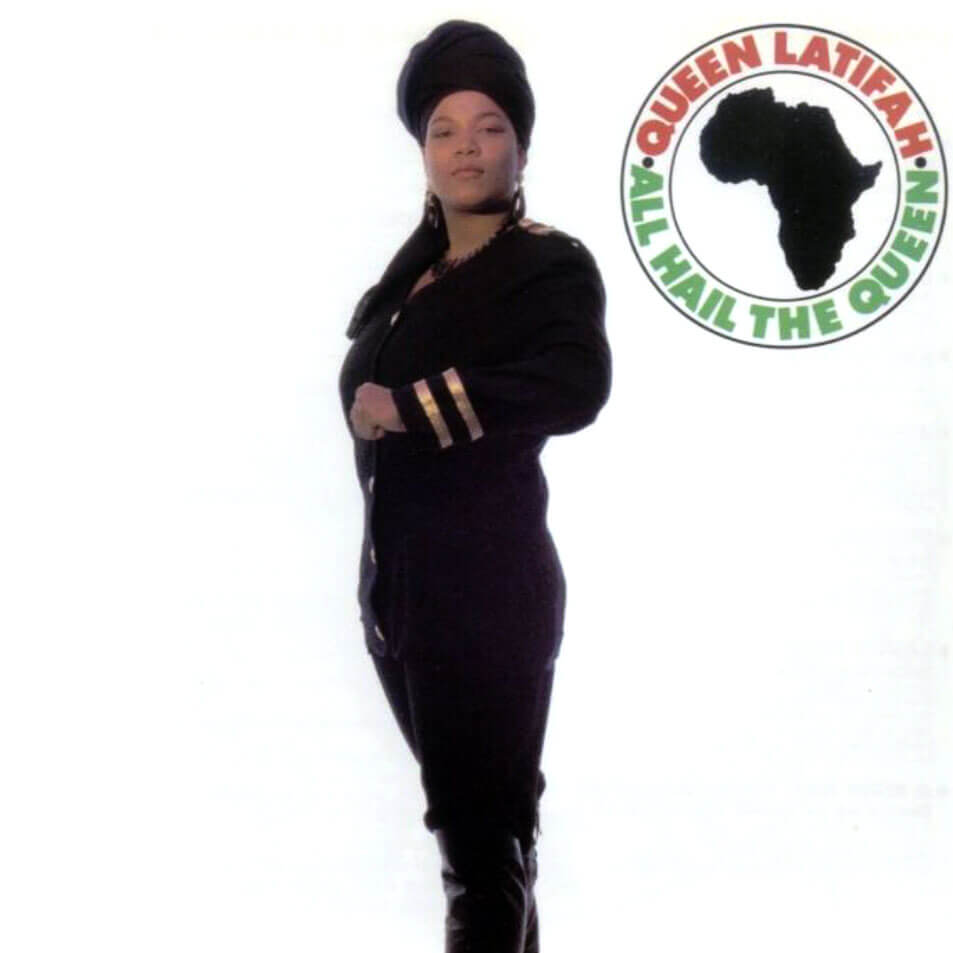


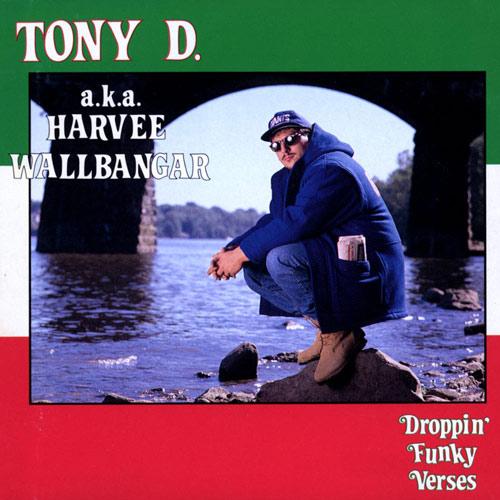
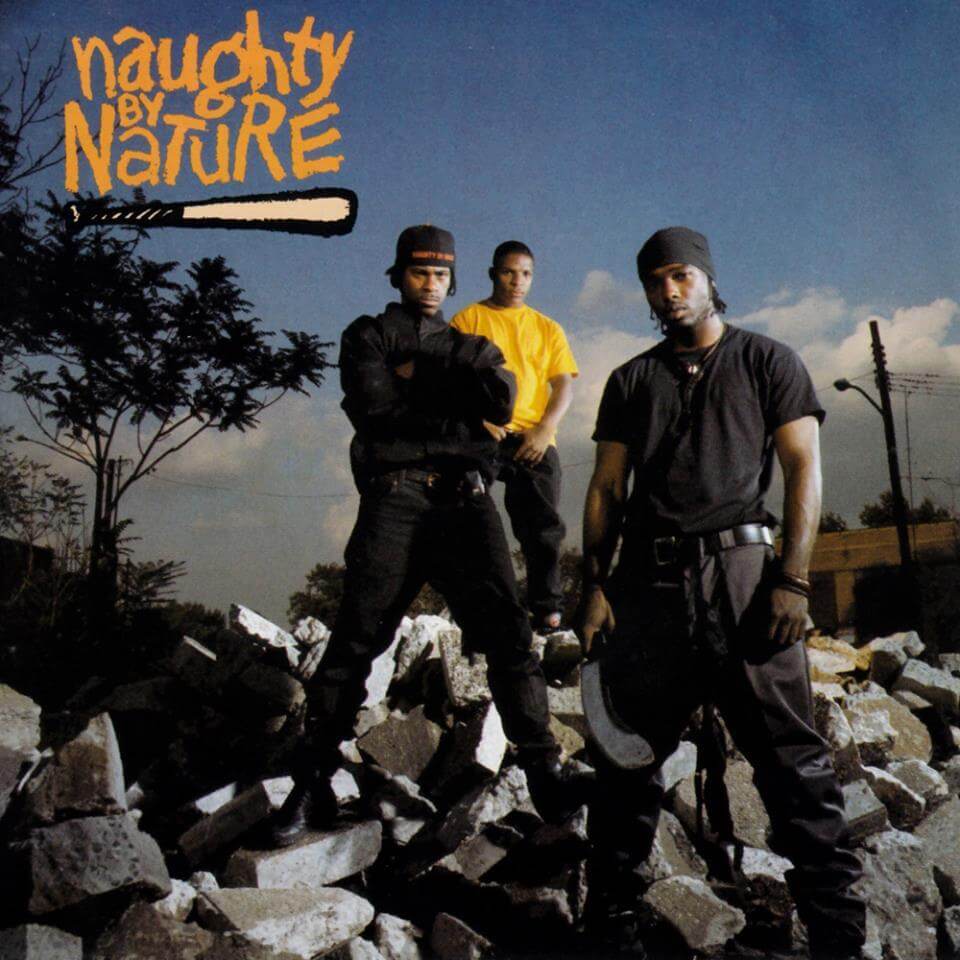

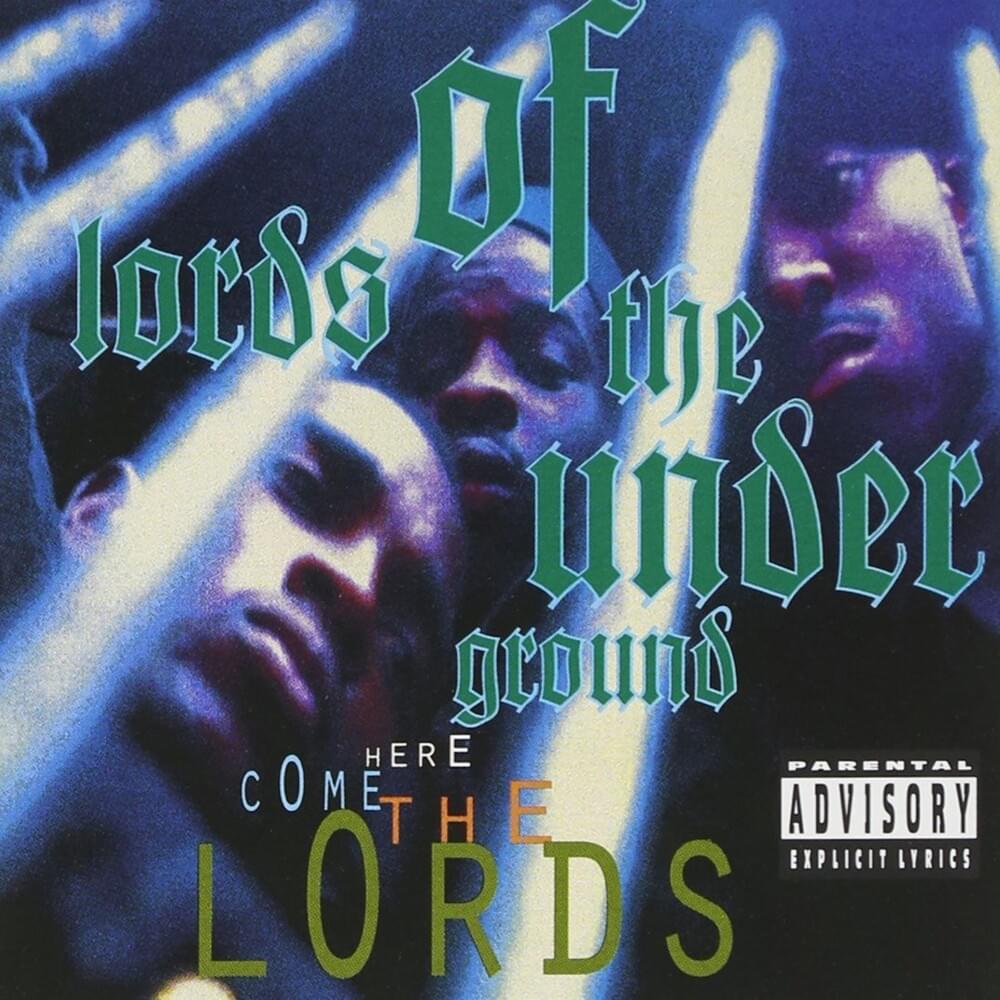
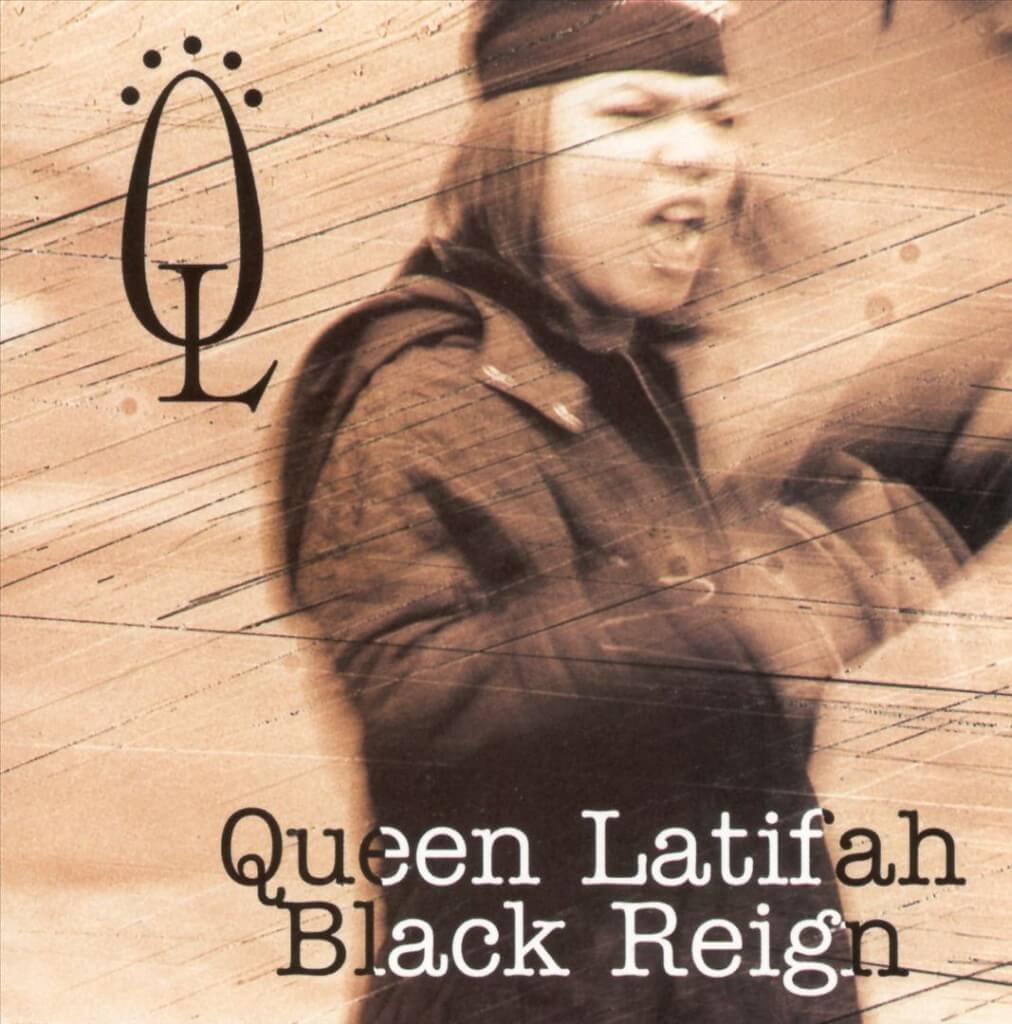
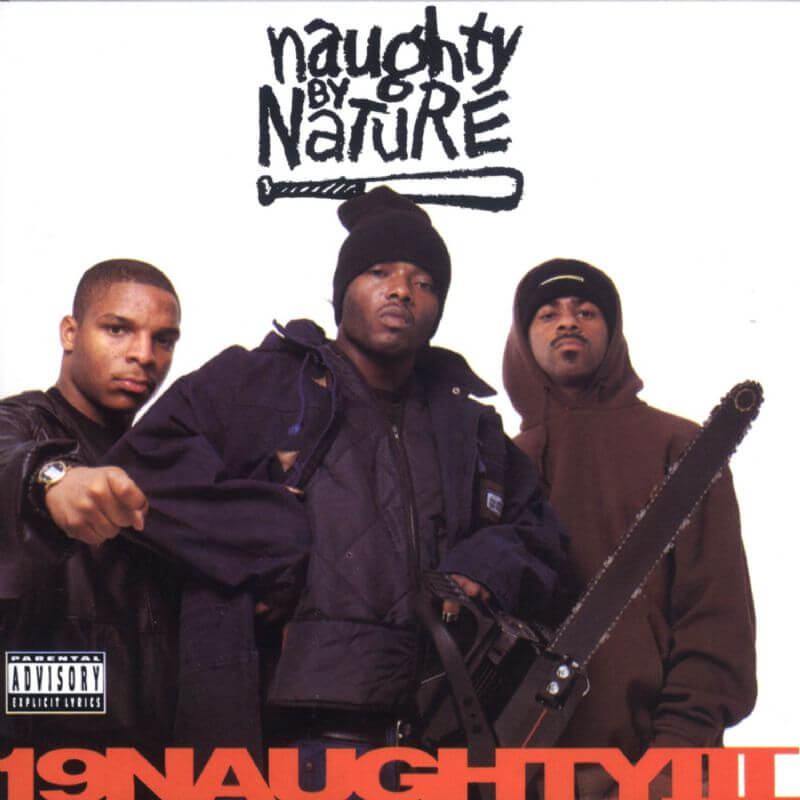
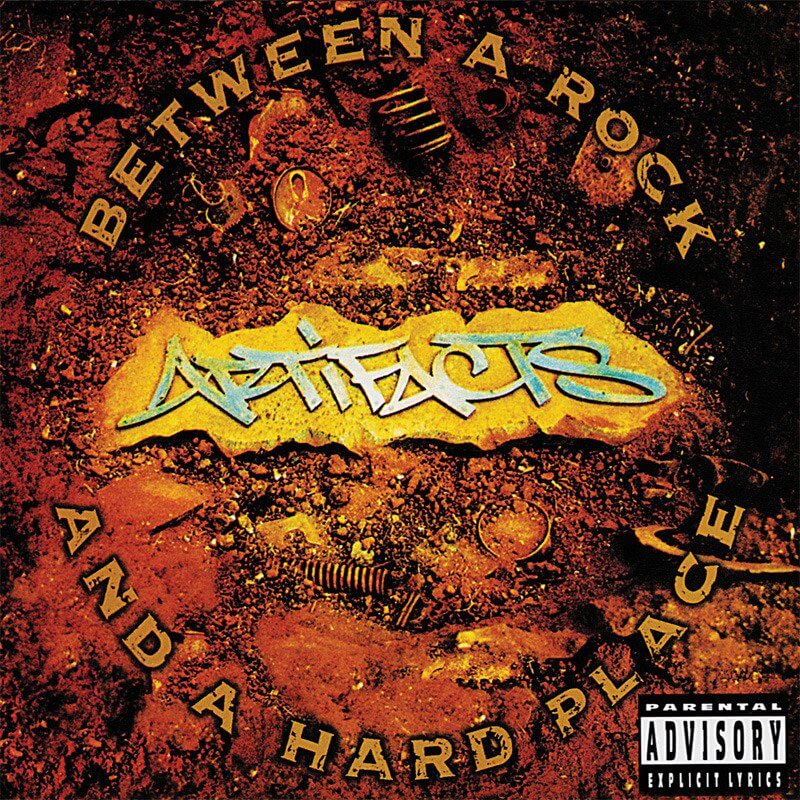

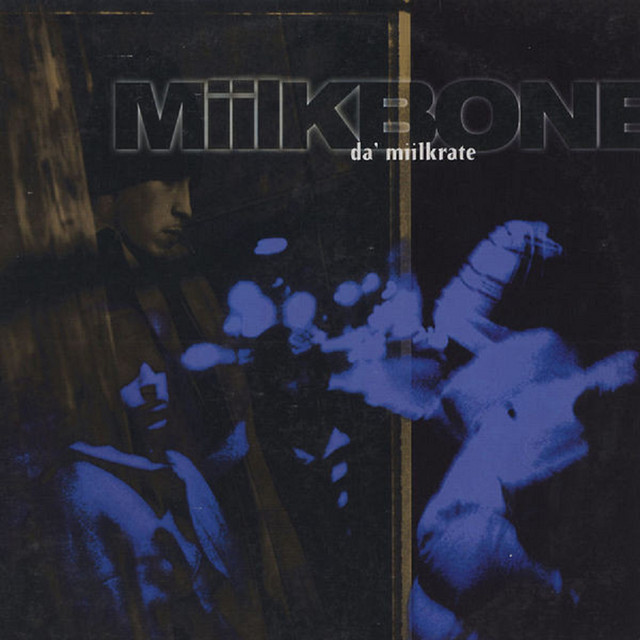
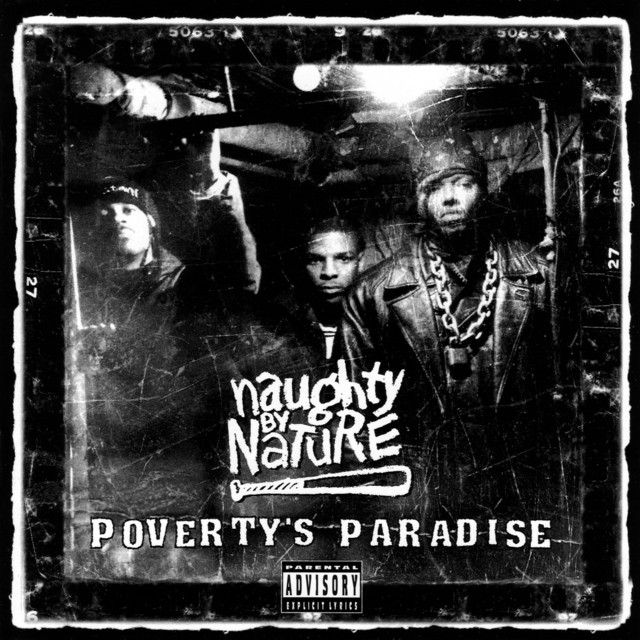
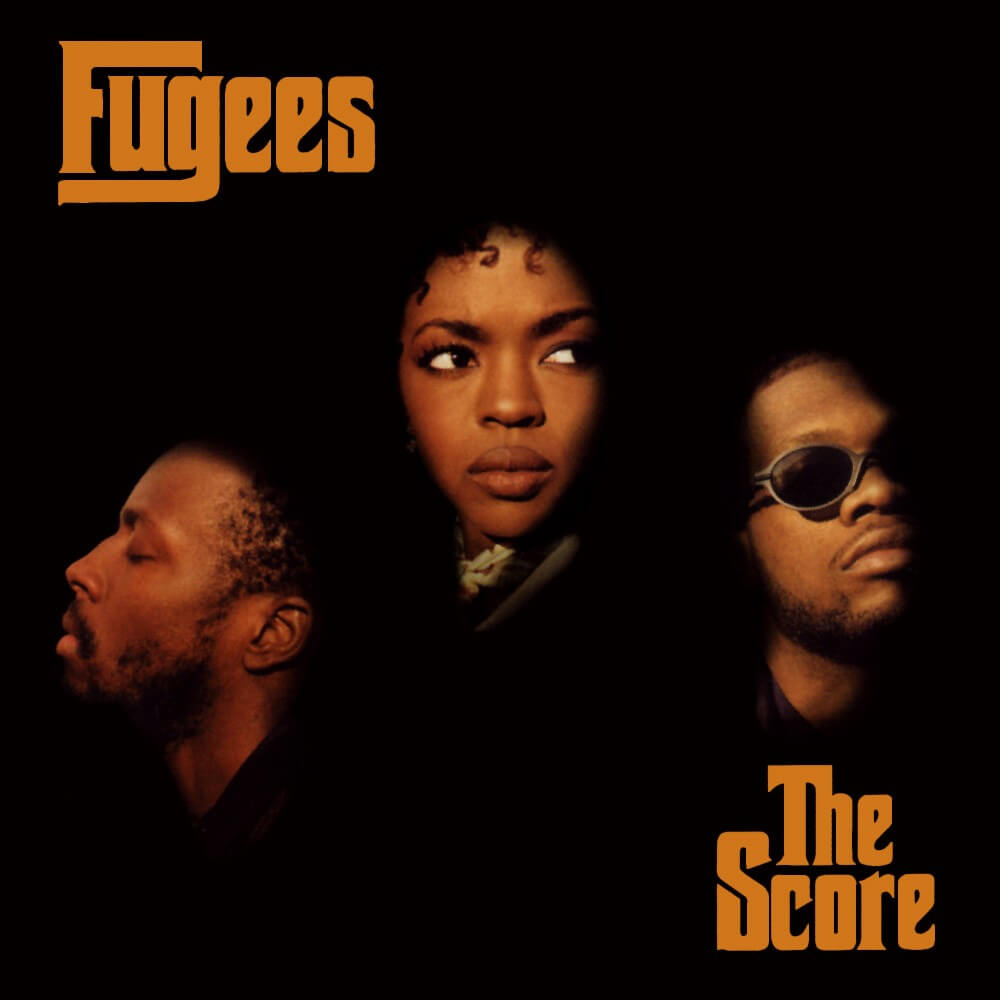

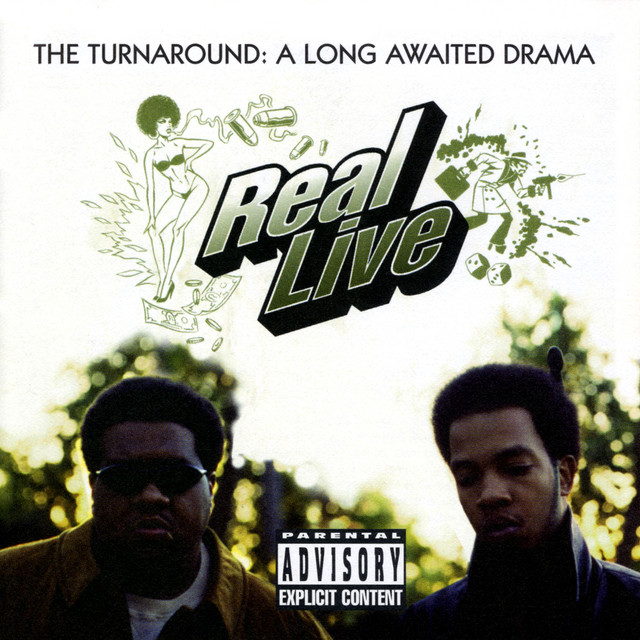
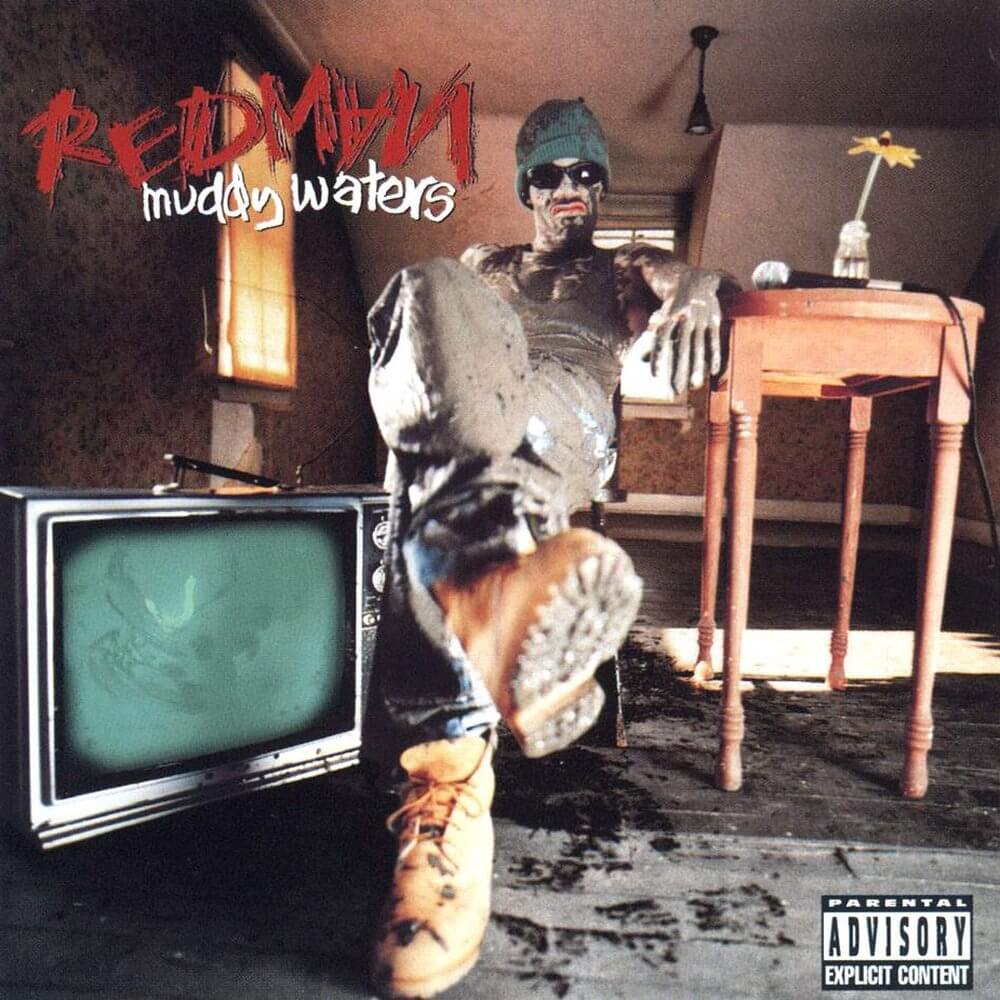


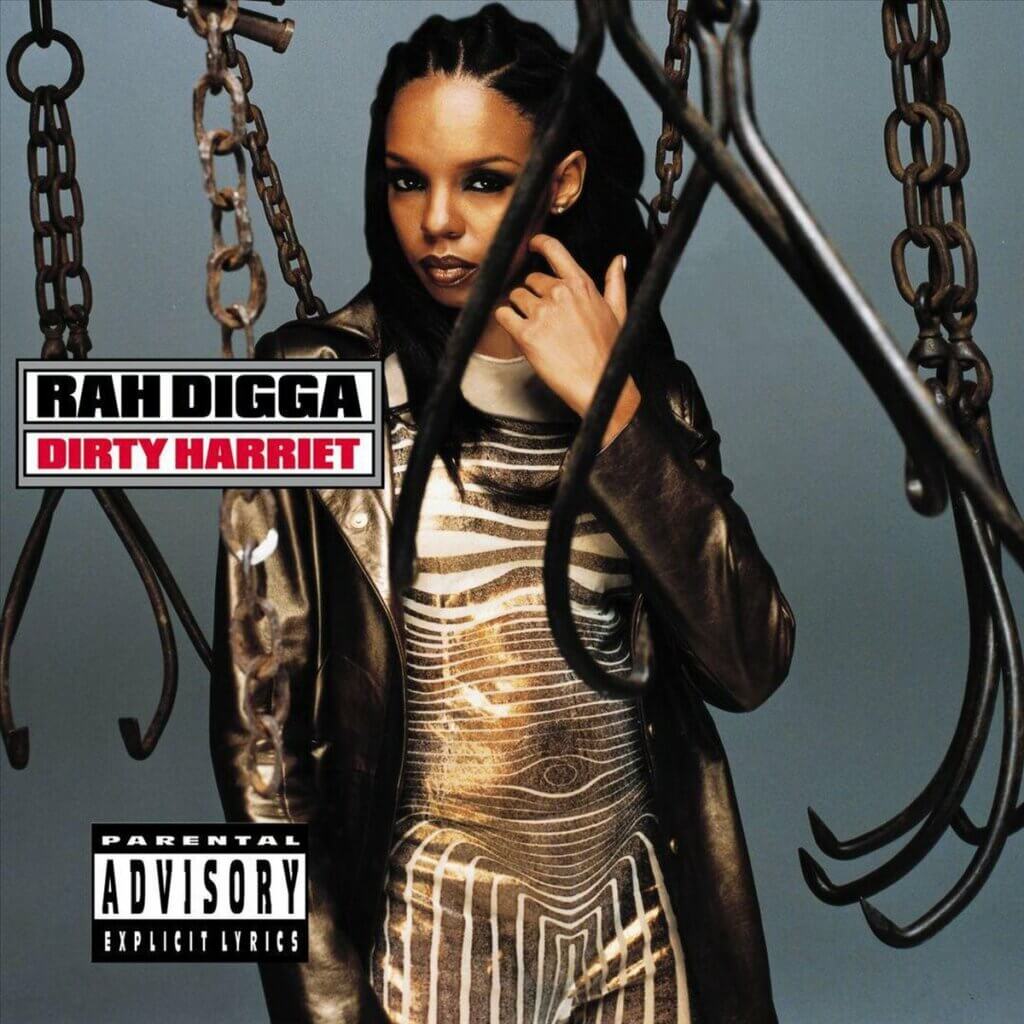
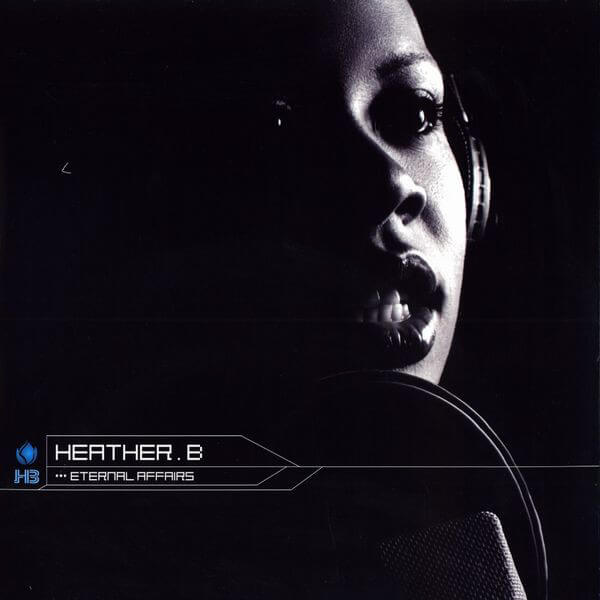
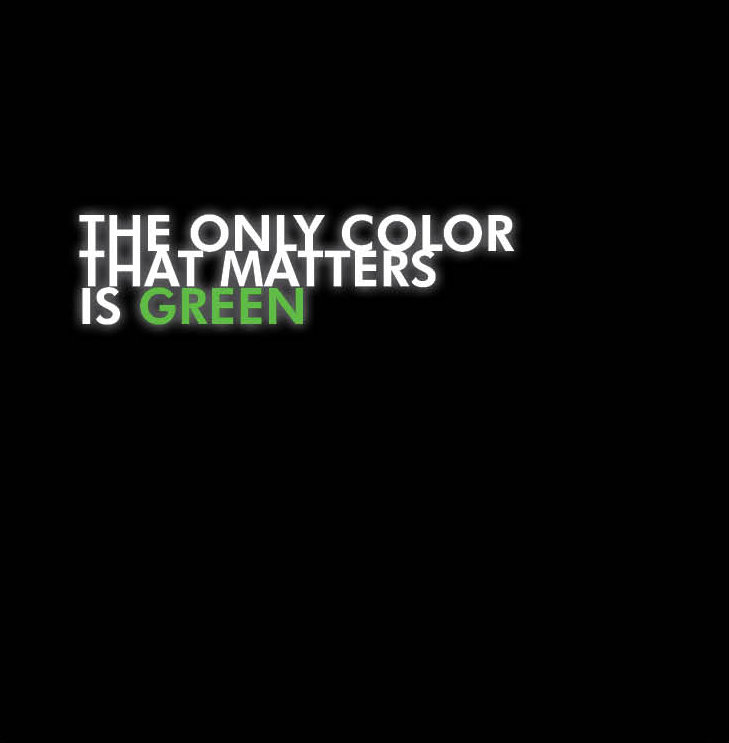
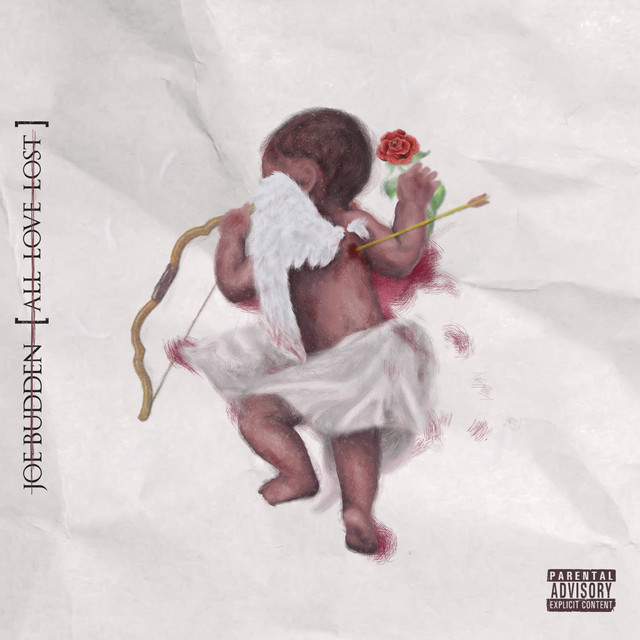


Budden’s Mood Muzik 4 needs some love, I appreciate all these articles, great work.